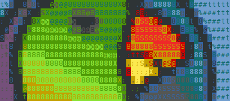Welcome to Moa!¶
Command line workflows in bioinformatics
Moa aims to assist a bioinformatician to organize, document, share, inspect, execute and repeat workflows in a command line environment - without losing any of the flexibility of the command line (see Goals).
Download and installation instructions can be found in: Installation.
- *NOTE: The software (and manual) are under development. Things might
- still change.*
Introduction¶
These days, generating massive amounts of data is an everyday element of biological research; and almost all projects have a computational biology, or bioinformatics, components. Such embedded work commonly consists of chaining a number of 3rd party tools together, often with some data manipulation in between the steps. It is important to have such projects properly organized, particularly when a projects grows bigger.
There are many different ways to organize a bioinformatics project. Many bioinformaticians use the command line, scripts or Makefiles to organize and automate their work. This approach has obvious advantages, most importantly flexibility. With almost any approach, meticulous care needs to be taken to keep a project well organized and documented. If this is not done, it is easy to lose track, certainly when others have to try to make sense of your project.
Moa hopes to make meticulous organization of a command line project much less of a burden - leaving you to focus on the fun parts.
Thoughts on workflow organization¶
Most (bioinformatics?) projects start small, and grow over time. From that perspective it is advisable to give the organization of your project some thought on forehand.
When using Moa a workflow resides in a directory tree, with each directory containing the separate analysis steps. A Moa job is linked to a directory, and one directory can contain only Moa job. In- and output data of each analysis typically resides in the same directory structure. Having bot structure and data as regular files on your file system makes a workflow extremely accessible. It is however important that the directory structure represent the workflow in a logical manner.
There are likely multiple ways of achieving a healthy organization of a bioinformatics (Moa) project, we proposes the following organization:
- On the highest levels organize your project according to fundamental divisions in the project or data source. For example, if you work with data from multiple organisms, that might be a good top level division.
- On lower levels start organizing your annotation pipeline. Since most
